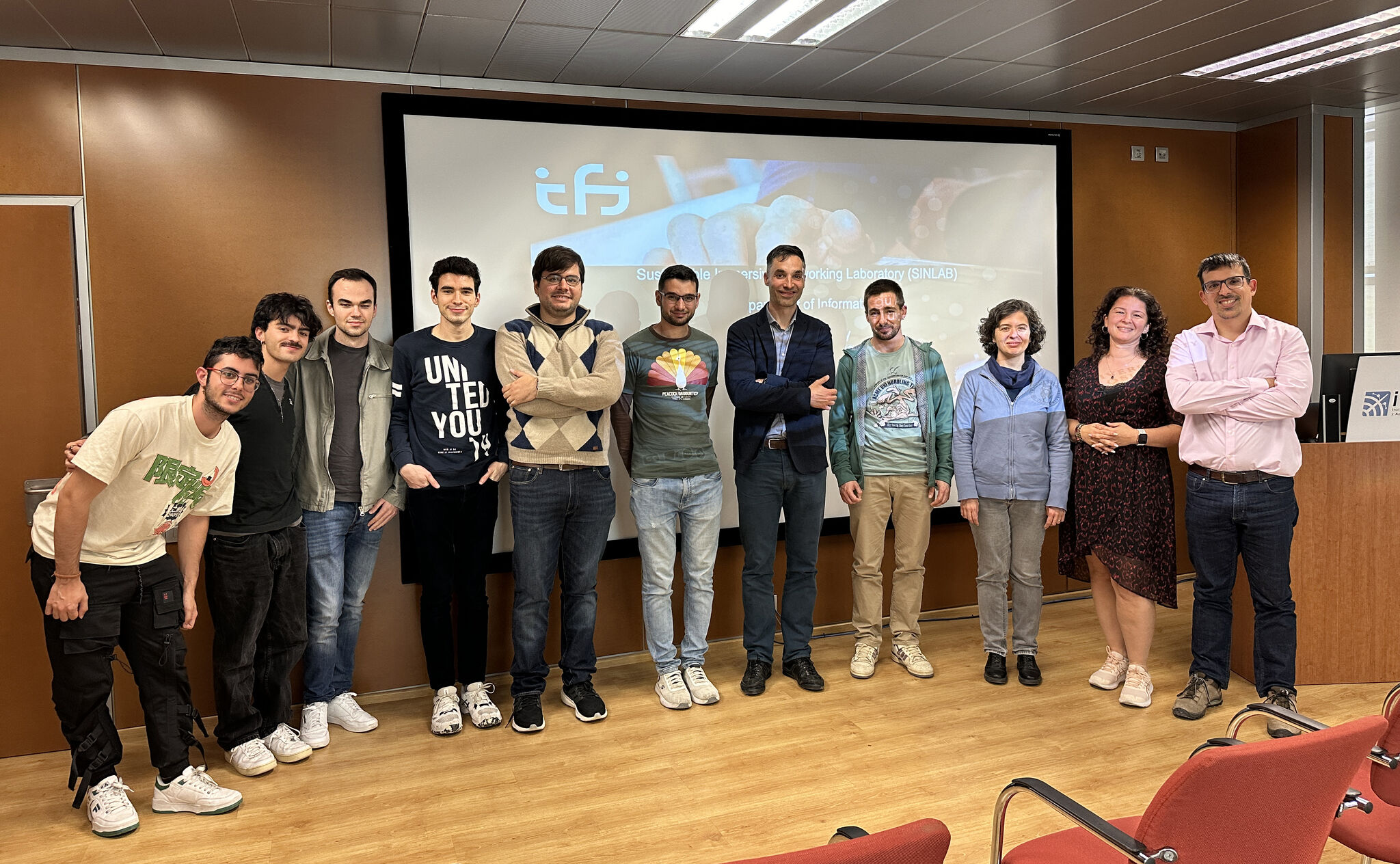La profesora Ozgu Allay de la Universidad de Oslo (Noruega) visitó ITEAM para impartir una charla científica titulada «Multimodal Interactions in the eXtended Reality Era». La charla forma parte de la colaboración entre la Universitat Politècnica de València y la Universidad de Oslo en el marco del proyecto europeo IMAGINE-B5G.
La profesora Allay presentó las actividades del Sustainable Immersive Networking Laboratory (SINLAB) en la Universidad de Oslo, destacando dos actividades de investigación recientes.
“Experiencing Rotation and Curvature Gain for Redirected Walking in Virtual Reality”, E. M. Kjenstad, H. K. Ringsby, R. J. Gaeb, C. Erdem, K. Kousias, O. Alay, and C. Griwodz, Proceedings of the ACM Workshop on Immersive Mixed and Virtual Environment Systems (MMVE ’23).
El objetivo de la primera actividad de investigación es explorar la traducción del movimiento natural de caminar del mundo real al mundo virtual. En los últimos años, las interacciones con los entornos virtuales se han investigado, pero muy frecuentemente, dichas interacciones se centran en usuarios estacionarios. Traducir directamente el caminar en el mundo real al mundo virtual es, el enfoque más natural, sin embargo, el tamaño limitado del espacio disponible en el mundo real impone límites. Redirected Walking (RW) manipula los sentidos humanos y permite a los usuarios interactuar con el mundo virtual de la forma más natural posible. En este trabajo, se investiga hasta qué punto RW es alcanzable sin ser percibido por los usuarios, y cómo el movimiento libre del cuerpo contribuye a la sensación de inmersión y naturalidad al actuar en y a través del mundo virtual.
“How do Users Experience Asynchrony between Visual and Haptic Information?”, S. Zoltanski, C. Erdem, K. Kousias, O. Alay, C. Griwodz, in the Proceedings of ACM Multimedia Systems Conference (MMSys), 2024.
El objetivo de la segunda actividad de investigación es explorar la importancia entre la información visual y háptica en las interacciones en red. En tales interacciones, la latencia juega un papel significativo en la determinación de la capacidad de respuesta. Gestionar proactivamente la latencia a través de medidas predictivas y estrategias compensatorias es fundamental para el éxito de las aplicaciones interactivas, asegurando una experiencia de usuario más inmersiva y receptiva. Este trabajo da un paso en esta dirección realizando un estudio de usuario para investigar la importancia de la asincronía entre la información visual y háptica. Al introducir retraso en un juego de esquivar en primera persona, se estudia cómo perciben los humanos los niveles de asincronía y cuáles son los umbrales perceptuales que los humanos pueden tolerar para la interacción en red.

